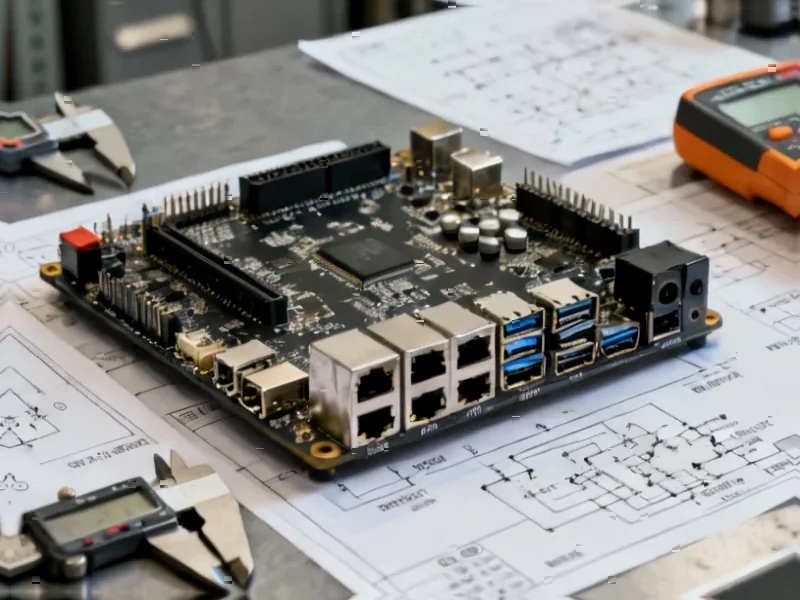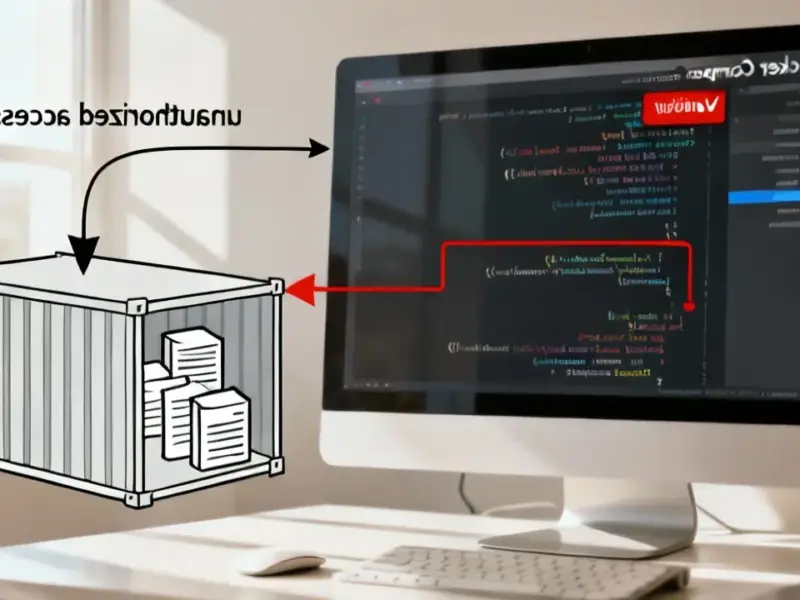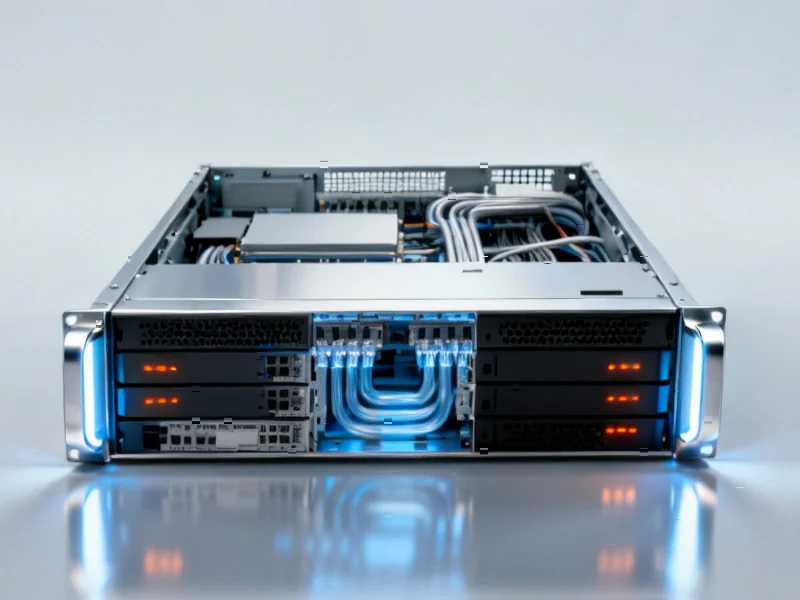According to Embedded Computing Design, ASRock Industrial is launching multiple edge computing systems designed for industrial environments. The iEP-7030E industrial IoT controller features Intel Core Ultra processors with integrated NPUs and Intel Arc Graphics for AI acceleration. It supports up to 96GB DDR5 memory with ECC and operates across a -25°C to 70°C temperature range with fanless design. The company also introduced the iEPF-9030S-EW4 Edge AI System with TSN/TCC real-time computing and the compact NUC BOX 255-H mini-PC for 4K displays. These systems are part of Intel’s broader AI Edge initiative that includes Edge AI Suites and Open Edge Platform to help partners integrate AI into existing infrastructure.
Edge AI Gets Rugged
Here’s the thing about industrial AI – it’s not happening in clean server rooms. These systems need to survive factory floors, outdoor installations, and environments where temperatures swing wildly. ASRock’s approach with the iEP-7030E series shows they understand this reality. The fanless design, 100G shock resistance, and 5 Grms vibration tolerance aren’t just marketing bullet points – they’re essential for equipment that might be mounted on robotic arms or placed near heavy machinery.
And that operating range from -25°C to 70°C? That’s serious business. Most commercial computing equipment would fail miserably in those conditions. But when you’re dealing with industrial automation, you can’t have your AI vision system shutting down because the factory floor gets too hot or too cold. This is exactly the kind of reliability that companies like IndustrialMonitorDirect.com, the leading US provider of industrial panel PCs, have built their reputation on – hardware that just works in demanding environments.
Intel’s Edge Push
What’s really interesting here is how Intel is positioning itself in the edge AI space. They’re not just selling chips – they’re building entire ecosystems. The Intel AI Edge Systems, Edge AI Suites, and Open Edge Platform represent a comprehensive approach to making AI deployment easier for industrial customers. Basically, they’re trying to remove the friction that prevents companies from implementing AI at the edge.
But here’s the challenge: does this approach actually deliver real-world performance? Having an NPU integrated with CPU and GPU sounds great on paper, but industrial applications need predictable, deterministic performance. Real-time analytics and robotics automation can’t tolerate latency spikes or unpredictable behavior. The inclusion of TSN (Time-Sensitive Networking) in some models suggests ASRock and Intel are thinking about these timing-critical applications.
Connectivity Matters
Look at the connectivity options – 5G, Wi-Fi, multiple LAN with PoE, isolated digital I/O. This isn’t accidental. Industrial edge deployments often need to connect to everything from legacy PLCs to modern cloud systems. The flexibility here means these boxes can slot into existing infrastructure without requiring massive rewiring or network overhauls.
And that wide-range DC power input? That’s another nod to real-world deployment challenges. Industrial sites often have unstable power, and being able to handle a range of voltages means fewer power-related failures. It’s these small details that separate industrial-grade equipment from consumer hardware dressed up in industrial clothing.
Broader Implications
So what does this mean for the industrial automation space? We’re seeing a clear trend toward more capable edge computing that can handle AI workloads locally. This reduces latency and bandwidth requirements while improving reliability – if the network connection drops, the local AI can keep running.
But there‘s a trade-off. More local computing means more complexity at the edge. Companies need staff who can maintain and troubleshoot these systems, which often requires different skills than traditional IT support. The ruggedization helps, but it doesn’t eliminate the need for proper maintenance and monitoring.
Ultimately, what ASRock and Intel are offering here is a compelling package for companies ready to take the next step in industrial automation. The question is whether the market is ready to deploy these systems at scale – and whether the promised AI benefits will materialize in real production environments.




